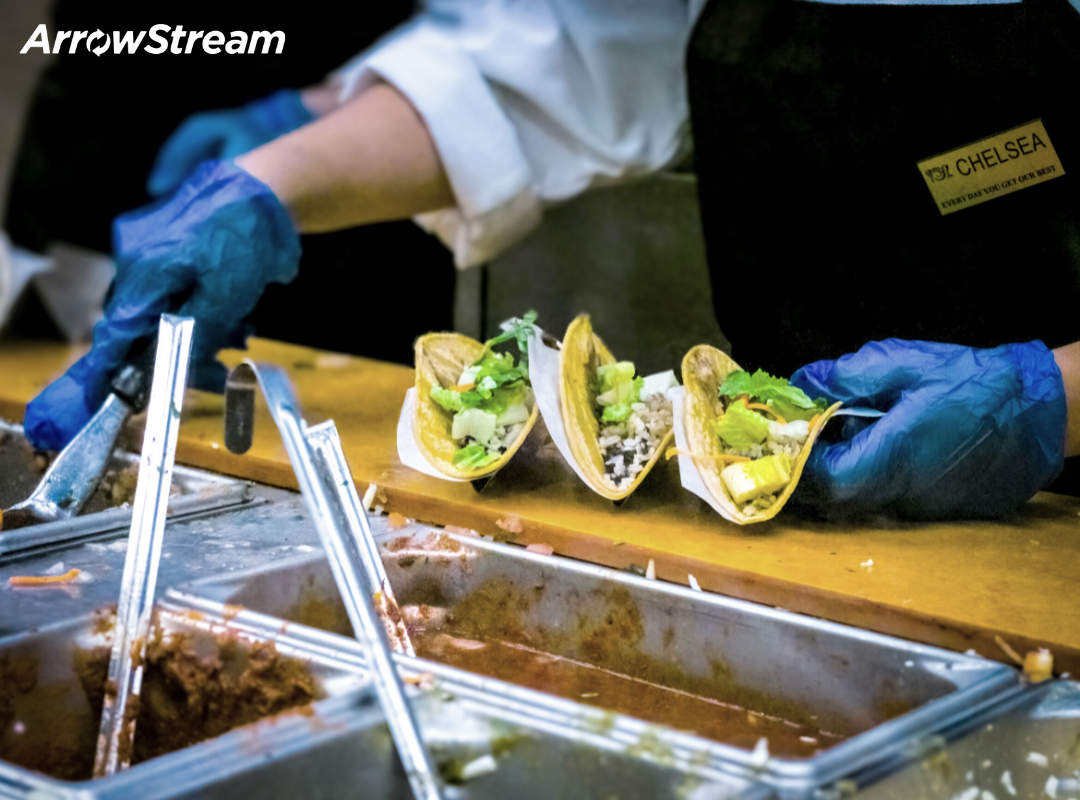
Maintaining the safety of food products is paramount to every restaurant business. Food safety issues can not only result in the loss of customers - but they can also be disastrous to the reputation of your brand and may even result in lawsuits.
The Center of Disease Control and Prevention estimates that there are over 48 million cases of food-borne illness in the United States each year – of which 128,000 result in hospitalization, and 3,000 in fatality. Implementing regulated procedures for the safety of your restaurant’s food products is a vital component of running an effective operation and will benefit you in the long run.
Proper Storage
Proper storage of your food products as soon as they are received is essential to ensuring their safety. Failing to promptly store food products creates the risk of contamination that can lead to food-borne illness. Most methods of food storage involve controlling temperature through freezing or refrigeration since harmful pathogens are unable to survive in environments absent of heat. The temperature range of 40o to 140o Fahrenheit (5o to 60o Celcius) is known as the “Temperature Danger Zone,” since these temperatures are most conducive to the survival and spread of harmful pathogens.
Some food products are more susceptible to contamination than others and their proper handling and storage must be prioritized accordingly. Fruits, vegetables, meat, seafood, eggs, and dairy products are at high risk of contamination – whereas bread, fermented foods, and bottled marinades or sauces such as salsa, ketchup, honey, jam, and peanut butter, are at very low risk of contamination. A study conducted by the FDA, CDC, and US Department of Agriculture found that between 1998 and 2012, more than 80% of E. coli infections were linked to beef and vegetable row crops, 66% of campylobacter illnesses were caused by dairy products, and 81% of listeria outbreaks were the result of contaminated fruit and dairy products.
Prompt and efficient storage for these high-risk food items is necessary to prevent contamination. The 2 Hour / 4 Hour Rule states that high-risk food items (such as meat and dairy products) must be either used or discarded after 2 hours in the temperature danger zone, and unequivocally discarded after 4.
Even properly stored food must be utilized within a certain timeframe. The US Department of Health and Human Services provides guidelines on the viable duration of cold food storage. For instance, steaks can be safely refrigerated for 3 to 5 days and safely frozen for 4 to 12 months, whereas bacon can be safely refrigerated for 1 week and safely frozen for 1 month.
Restaurants must also ensure that their suppliers are storing and transporting their food products properly – for example, if foods that require refrigeration are not delivered at temperatures below 40o Fahrenheit (5o Celsius) they must be rejected.
Preventing Contamination
Food products can also be contaminated with harmful pathogens that cause food-borne illness when consumed because of exposure to chemicals or unsafe food handling practices. Cross-contamination (the unintentional transfer of allergens, pathogens, or contaminants from a food, object, or person to another food) is a frequent cause of food-borne illness. Contact between raw food items must be avoided, and all equipment used in their preparation must be washed before use on another raw food item. Touching raw meat and then handling vegetables without washing your hands in between can lead to contamination. The same is true of using the same knife, surface, or container without sanitizing it between use, or wiping your hands on a food soiled apron or towel prior to handling another food product. Educating and training your employees to utilize safe food handling procedures is an essential component of preventing food contamination.
Sanitizing and cleaning equipment used for food preparation such as utensils and containers, as well as the surfaces the food is being prepared on, is a necessary step in the prevention of contamination. It is also imperative that the chemicals being used to sanitize the restaurant’s equipment and facilities are not hazardous to the process of food preparation. For instance, the use of hand sanitizer in the restaurant industry has increased dramatically in attempts to prevent the spread of COVID-19; however, the use of hand sanitizer by restaurant employees is not recommended since it can cause chemical contamination of food products.
Ensuring the safety of food products requires attention to detail at all levels – restaurants must ensure that their suppliers are delivering safe food products, that proper cleaning and sanitization protocols are implemented and always followed, and that restaurant staff are properly trained on safe methods of food handling, preparation, and storage.
